

Left: Route from Lecco funivia to Rifugio Azzoni on Resegone and back. Right: Rounding a bend on trail #1 for Resegone with Lago Garlate and Annone in the distance.
Overview
Length: 12 km (7.5 mi)
Duration: 5 hours walking time, 3 hours up, 2 hours down; 1-hour lunch at Rifugio Azzoni
Elevation: 660 m (2,170 ft) @ base of funivia, 1,865 m (6,119 ft) @ Punta Cermenati just above Rifugio Azzoni
Location: Italy, Lombardy, Lecco
Getting There
From Bergamo, you can take a local train to Lecco; it should take about 40 minutes. Just outside the train station in Lecco, take the bus Linea 5 Funivia – Villa Brick, which runs back and forth between the station and funivia. At the base of the funivia, either start walking (as we did), or take the funivia up and cut some time off your hike. Likewise, you can end your hike at the top or bottom of the funivia, depending on how you are feeling.




Views from the hike to Resegone. Far left: Valle Imagna and Costa del Palio. Center left: View from trail #8 over Valle Imagna. Center right: View from Rifugio Stoppani toward Lecco and Como. Far right: View over Piani d'Erna toward Lecco, Lago Como, and Como.
The Hike
We arrived at the bottom station of the funivia (referred to as piazzale della funivia dei piani d’Erna) around 10:00 and started hiking, always following the yellow, white and red marked Sentiero 1. Along the way, you pass through Rifugio Stoppani, where you can stop for a break. Also, along the way there were a few small springs (sorgente) for getting water if needed.
Reaching Rifugio Azzoni by Sentiero 1 is tiring. From the bottom station to Rifugio Stoppani, it’s steep, but nothing we had to take our trekking poles out for or use our hands for. After Stoppani and, in particular the last few hundred meters below Rifugio Azzon, we found we were using our hands to scramble up the steep sections. There was a cable for one 10 meter part of the trail to aid hikers traverse a narrow spot. I don’t like heights or narrow trails that drop off and I did just fine. Given the choice, I’d rather climb Sentiero 1 than descend it.
We reached Punta Cermenati around 13:00, the high point of the crest, which is just a few meters above Rifugio Azzoni. After the obligatory photos from the summit, we descended back down to relax and eat at Azzoni.
At 14:00 we started our return following Sentiero 8 to Sentiero 7 to the top of the Piani d'Erna funivia station.
Sentiero 1 is on the Lecco-side of Resegone, while Sentieri 7/8 are on the Valle Imagna side. Doing a loop gives you the chance to hike in the provinces of both Bergamo and Lecco. Good overviews of the route we took (in Italian) can be found on the site Simand (with downloadable GPS tracks) or Ecco Lecco.
Resegone is a mountain that is composed of a number of peaks, including Punta Cermenati, where this hike took us. The name Resegone comes from the Lombard language and means “big saw” because its peaks resemble a saw tooth. Piani d’Erna is an area of high meadows 1,375m (4,500 ft) above Lecco that is a good starting point for hiking to Resegone. If strenuous hiking is not the ticket for you, you can just take the funivia up to Piani d’Erna, explore a bit, and go for lunch. From Erna, you can still enjoy the views and perhaps other activities described here. If you notice old ski lifts, that’s because this was once a popular ski area. Increasingly less snow in the 1990s and onward put a kibosh on ski activities.



We walk to eat: food at Rifugio Azzoni: Minestrone, pasta, brasato.

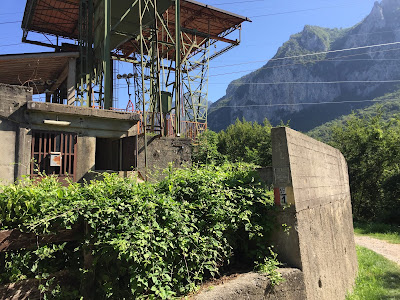

Views from the trail. Left: Base station of funivia looking up to Piani d'Erna. Center: Pick up trail #1 below funivia. Right: Trail #1 starts off easy smooth path.




Views from the trail. Left and center left: Near locality Costa, below Rifugio Stoppani. Center right: Signage after Stoppani. Right: After passing through Stoppani. Rifugio Azzoni and the cross on Punta Cermenati can be seen in the distance.


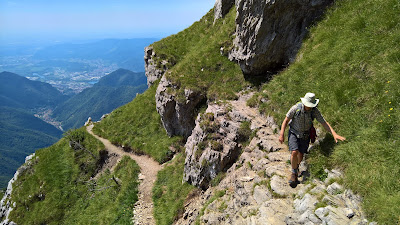
Left: After Rifugio Stoppani, the trail becomes more exposed. Center: Example of a small spring along the way due to the flow of water in the particular geology of Resegone. Right: Trail #1 becomes more exposed higher up.


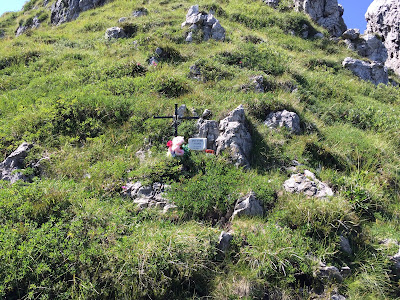
Left: Seems like you will never reach the top. Center: Hark! Rifugio Azzoni comes in sight. Right: A memorial to someone who died on the mountain.



Left: Last stretch of trail #1 to reach Azzoni with hands and feet occasionally needed. Center: Trail #7 and Piani d'Erna. Right: Trail #8, Val Caldera heading to Passo del Giuff.


Left: View from Trail #7, looking northeast toward Monte Due Mani. Right: View over Lecco and Como.


Left: View toward Piani d'Erna, looking north from Trail #1. Right: View north from Punta Cermenati on Resegone.
Plants
The plants we saw on the hike were identified using the resources listed in Resources for Identifying Plants around Bergamo. The list is given in the following format:
- [Family] Genus species – Common name in English (Common name in Italian)
[Apiaceae] Astrantia major – Great Masterwort (Astranzia maggiore)
[Asteraceae] Adenostyles alpina – (Cavolaccio alpino)
[Asteraceae] Centaurea uniflora – Singleflower Knapweed (Fiordaliso con un capolino)
[Asteraceae] Cirsium erisithales – Yellow Thistle (Cardo zampa d'orso)
[Campanulaceae] Campanula cochleariifolia – Earleaf Bellflower (Campanula con foglie di coclearia)
[Campanulaceae] Campanula raineri – Rainer’s Bellflower (Campanula dell'arciduca Ranieri)
[Campanulaceae] Campanula trachelium – Nettle-leaved Bellflower (Campanula selvatica)
[Caprifoliaceae] Knautia arvensis – Field Scabious (Ambretta comune)
[Caryophyllaceae] Dianthus superbus – Fringed Pink (Garofano superbo)
[Ericaceae] Rhododendron hirsutum – Hairy Alpenrose (Rododendro peloso)
[Lamiaceae] Prunella vulgaris – Common Self-Heal (Prunella commune)
[Lamiaceae] Stachys alopecuros – White Betony (Betonica bianca)
[Liliaceae] Lilium martagon – Martagon Lily, Turk’s Cap Lily (Giglio a turbante)
[Primulaceae] Cyclamen purpurascens – Alpine Cyclamen (Ciclamino delle Alpi)
[Ranunculaceae] Aconitum lycoctonum – Wolfsbane (Aconito lupaia)
[Ranunculaceae] Aconitum napellus – Monk’s-Hood (Aconito napello)
[Ranunculaceae] Pulsatilla – Pasqueflower
[Rosaceae] Dryas octopetala – White Dryas, Mountain Avens (Camedrio alpino)
[Saxifragaceae] Saxifraga aizoides – Yellow Saxifrage (Sassifraga gialla)

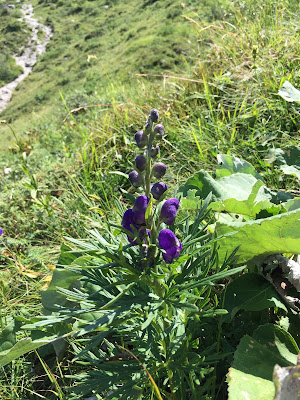


Left: Aconitum lycoctonum – Wolfsbane (Aconito lupaia). Center left: Aconitum napellus – Monk’s-Hood (Aconito napello). Center right: Astrantia major – Great Masterwort (Astranzia maggiore). Right: Pulsatilla – Pasqueflower seed head.
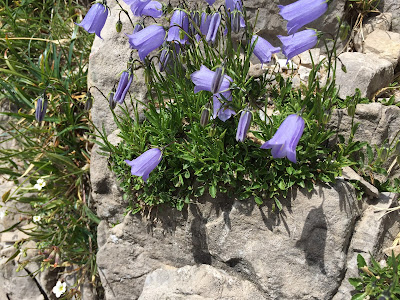

Left: Campanula cochleariifolia – Earleaf Bellflower (Campanula con foglie di coclearia). Right: Campanula raineri – Rainer’s Bellflower (Campanula dell'arciduca Ranieri).



Left: Campanula trachelium – Nettle-leaved Bellflower (Campanula selvatica). Center: Centaurea uniflora – Singleflower Knapweed (Fiordaliso con un capolino). Right: Stachys alopecuros – White Betony (Betonica bianca).



Left: Cirsium erisithales – Yellow Thistle (Cardo zampa d'orso). Center: Dryas octopetala – White Dryas, Mountain Avens (Camedrio alpino). Right: Dianthus superbus – Fringed Pink (Garofano superbo).


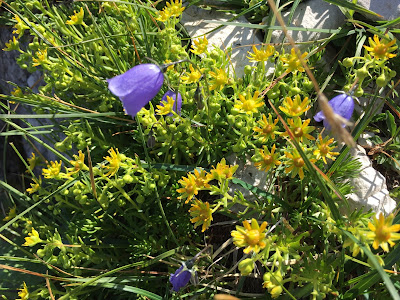
Left: Cyclamen purpurascens – Alpine Cyclamen (Ciclamino delle Alpi). Center: Knautia arvensis – Field Scabious (Ambretta comune). Right: Saxifraga aizoides – Yellow Saxifrage (Sassifraga gialla).
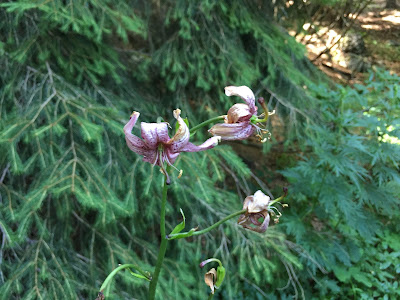


Left: Lilium martagon – Martagon Lily, Turk’s Cap Lily (Giglio a turbante). Center: Rhododendron hirsutum – Hairy Alpenrose (Rododendro peloso). Right: Knautia arvensis – Field Scabious (Ambretta comune).



Left and center: Adenostyles alpina – (Cavolaccio alpino). Right: Prunella vulgaris – Common Self-Heal (Prunella commune).
No comments:
Post a Comment
All comments are moderated. If your comment doesn't appear right away, it was likely accepted. Check back in a day if you asked a question.